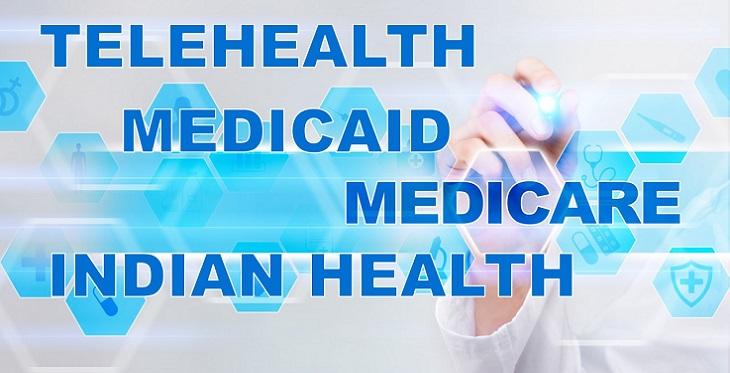
Medicare and Medicaid – two important programs for paying for health care for American Indian and Alaska Native (AI/AN) people. As we near the end of the COVID-19 Public Health Emergency (PHE), it’s going to be important to understand the differences between these programs and how they may impact reimbursements for telehealth services moving forward. Understanding these differences will be important for understanding the next steps for continuing to get reimbursed and any challenges that may be encountered in that process.
Telehealth has been transformative for health care delivery and has bridged distances in an unprecedented manner. Prior to the COVID-19 public health emergency, telehealth was a relative niche method of health care delivery. At the beginning of the PHE, however, social distancing guidelines made it a necessity. Much of this expansion has been made possible by flexibilities offered through the Medicare and Medicaid programs during the PHE. What happens when that ends?
This is a top-of-mind question for Indian health providers, who rely heavily on Medicare and Medicaid as third-party payors. Indian Country is incredibly rural. Telehealth has allowed people to receive care without driving to a facility, a task which could often take hours. There have also been expansions in audio-only telehealth, which has addressed the vast broadband gap that exists in Indian Country. The answer to what happens after the end of the PHE will depend on which program to which you are referring.
Medicaid
The Medicaid program has some inherent flexibility but less uniformity. The states are fairly free to set their own parameters around Medicaid reimbursement. For example, this allowed patients to receive care from the home and through audio-only modalities. Virtually every state expanded their telehealth offerings during the pandemic and some states are moving towards making those expansions permanent, in some form or another. However, there is little uniformity among the states.
The inherent difficulty however with the Medicaid program is not knowing what happens from one state to the next. Neighboring states may have drastically different policies. This is a particular challenge for states that may operate on state lines or have patients who are enrolled in Medicaid in a different state. This may also complicate advocacy efforts because it requires advocates to be aware of the differing landscape across the states. The post-PHE telehealth landscape will vary depending on the state in which the patient lives.
Medicare
The Medicare program offers more uniformity but less flexibility. Some aspects of the Medicare program are set in statute and cannot be changed without an act of Congress. For example, a person cannot receive telehealth services from their home under existing federal law. However, due to waivers of federal law authorized during the pandemic, patients have been able to receive care from the home. Recently, Congress included an extension of this benefit in the Consolidated Appropriations Act, but that expansion only lasts for approximately five months after the end of the PHE. Unless Congress specifically authorizes a change to federal law, Medicare will not reimburse for telehealth provided in the home after that period expires. Changes to Medicare often require an act of Congress.
Conclusion
As we approach the end of PHE, there will be a lot of questions around what flexibilities will stay and which will go. The answer will differ greatly depending on the billing source. A Medicaid program may reimburse for a service while Medicare may not (or vice versa). It will be important for patients and providers to understand the differences between these programs as the PHE begins to unwind.


